Rotator Cuff Tear
The rotator cuff is a group of muscles that originates on the shoulder blade (the scapula) and insert on the top of the arm bone (the humerus).
The function of the rotator cuff is to move the shoulder. Often, the rotator cuff is inflamed or torn in people with painful shoulders. People typically complain of difficulty with overhead activities, like reaching for items off a high shelf, brushing the back of the hair, or fastening a bra. Often, people have difficulty sleeping on the painful shoulder.
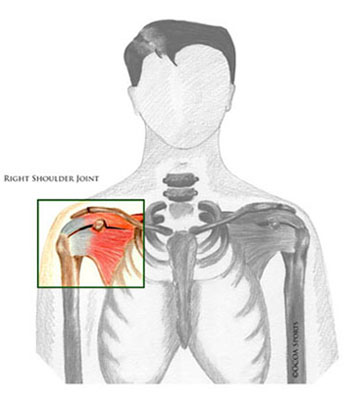
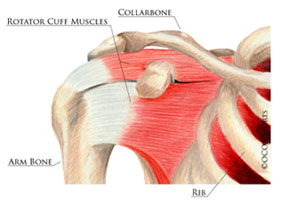
The Rotator Cuff
To evaluate for a rotator cuff tear, a doctor will perform an examination after a history is taken. X-Rays are performed, and often an MRI is ordered. The X-Rays will evaluate the bones in the shoulder, but not the rotator cuff itself. The MRI will show the muscles and tendons around the shoulder and allow the doctor to see the rotator cuff.
If the MRI shows a tear in the rotator cuff, then surgery may be recommended.
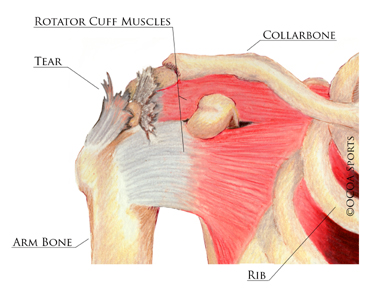
Torn Rotator Cuff
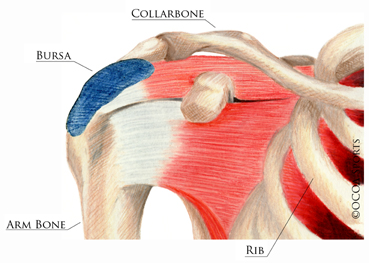
The bursa is a fluid filled sac on top of the Rotator Cuff
If no tear is present, an MRI may show rotator cuff “tendonitis”. Tendonitis is inflammation of the rotator cuff without tearing. This can be responsible for producing shoulder pain. Tendonitis often occurs with “bursitis”. Bursitis is inflammation of a fluid filled sac (bursa) on top of the rotator cuff that serves to lubricate the movement of the shoulder. The inflamed bursa can be pinched with overhead activities, causing pain.
Bursitis is also called “impingement syndrome.” Often a bone spur exists near the bursitis and is removed with a procedure called an “acromioplasty.” However, prior to recommending surgery, anti-inflammatory medicines, cortisone injections into the shoulder, and physical therapy are often attempted if no tear exists.
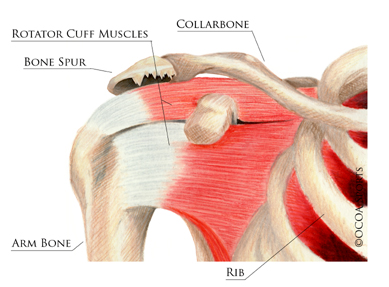
Bone spur near the Rotator Cuff
Rotator Cuff Surgery
If surgery is recommended it may be performed arthroscopically. Arthroscopic surgery uses small incisions and small tools, about the size of a pencil, to perform the procedure. All the work is visualized with a small camera, the arthroscope. The surgeon sees inside the shoulder with the arthroscope and its images are projected on a video screen.
During surgery, rotator cuff tears are repaired and bone spurs are removed. The rotator cuff muscle is stitched back to the bone. By stitching the rotator cuff back to the bone, the rotator cuff can heal in its proper location. The stitches are held in the bone with metal anchors or plastic that are drilled into the bone.
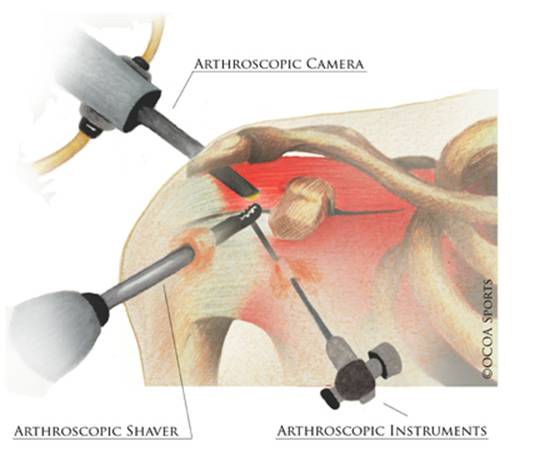
Arthroscopic camera and tools in the shoulder
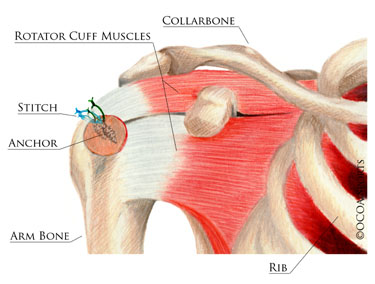
The rotator cuff is repaired back to its normal position
If no tear is present, a procedure called a “subacromial decompression” or “acromioplasty” is performed to allow more room for the rotator cuff to move. This may be recommended if anti-inflammatory medicines, cortisone injections into the shoulder, and physical therapy fail to relieve the pain of bursitis. The procedure removes the bone spur associated with bursitis. If a rotator cuff tear is present and a repair is performed, a “subacromial decompression” is usually done along with the repair.
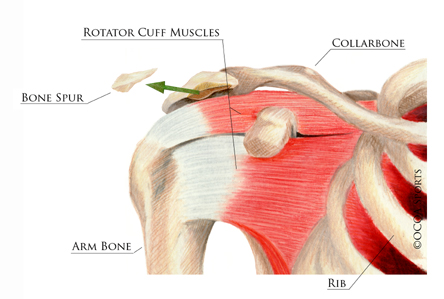
The bone spur is removed to allow for more room for the Rotator Cuff
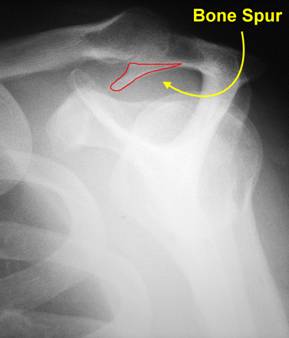
Shoulder X-Ray showing large bone spur
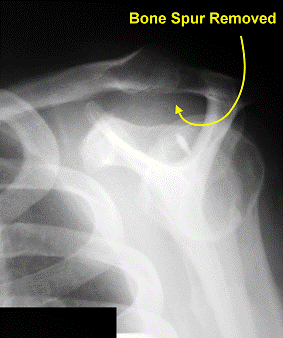
Shoulder X-Ray after bone spur removal – a.k.a. “acromioplasty”
During surgery, patients are asleep and do not remember the procedure. According to the Anesthesia Manual of Surgical Procedures, pain from Rotator Cuff surgery is rated at 6 out of 10 on a scale of 1 to 10, with 1 being no pain and 10 being the worst pain. Pain medication is given to control pain and keep patients comfortable after surgery. Pain predictably improves after surgery, especially after the first week.
What to Expect after Rotator Cuff Repair Surgery.
Your doctor may prescribe a sling after surgery. If so, you will probably wake up from surgery with the sling on.
Recovery after rotator cuff surgery is gradual. Patients usually take one to two weeks off from work. Physical therapy will be required for a proper recovery, usually for several months. Activity restrictions will apply after surgery until appropriate rehabilitation goals have been achieved.
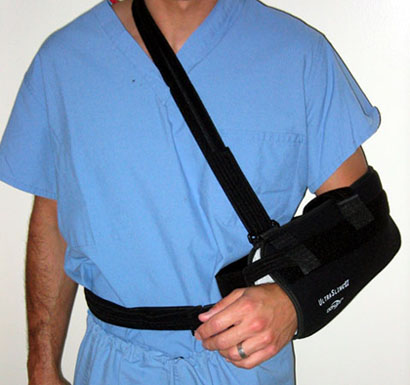
A typical post-operative sling
If you’re suffering from orthopedic pain, whether or not it’s caused by a rotator cuff tear, contact the doctors at Orlin & Cohen, Long Island’s leading orthopedic practice. Immediate appointments are available: Schedule yours now.



